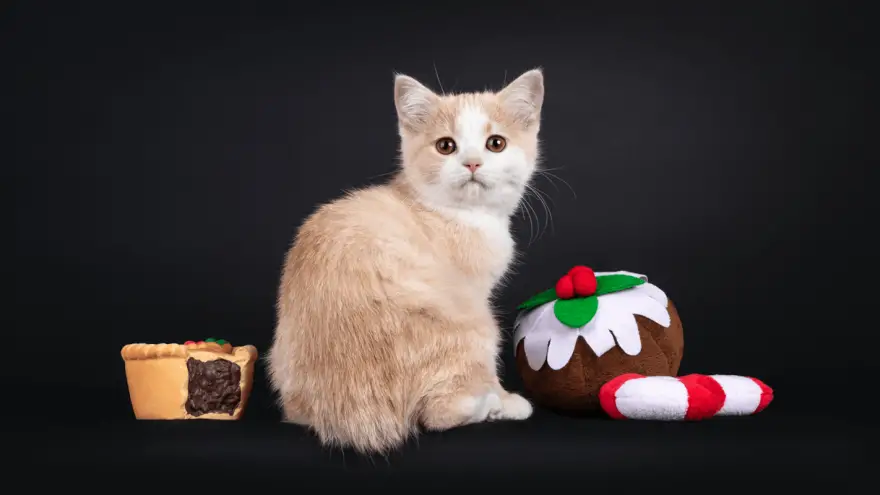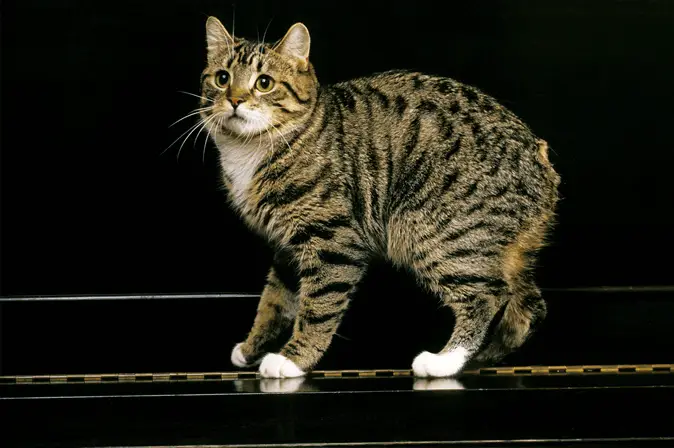
Manx
We love unique cat breeds, and what’s better than a cat without a tail?! The Manx is a tailless breed that originated in the Isle of Man, off the coast of Great Britain. These cats are purposely bred to be tailless. However, there is a lot more than meets the eye with this breed. For example, these cats are fantastic hunters, often present on boats. Their main task was to keep the boat mouse and rat-free. They performed the same duties on farms. Here’s what you should know about the Manx.

Length:
14–16 in

Weight:
8-12 lb

Origin:
Isle of Man

Life Expectancy:
8-14 years
Breed History
The Manx is not the oldest breed out there, but it is fairly old. Most cat historians believe this breed is at least 250 years old. The lack of tail is a result of a naturally occurring mutation. Original Manx were kept for their hunting skills. There wasn’t a single mouse or a rat that could get past these supreme predators. The evolution of this breed also gave them longer hind legs. That means the Manx can jump and run faster than average cats, which is an excellent skill to have if you are a predator. However, the exact way these cats arrived at the Isle of Man is not entirely known. What we do know is that their genes spread throughout the island, and the Isle of Man is now known for its tailless cats.
Cat Breed Characteristics
The Manx’s most dominant characteristic is its lack of tail. However, that is not all these cats have to offer. They have all sorts of incredible characteristics that make them very attractive to cat owners around the world. If you love cats and want to know more about this breed’s characteristics, here are the basic ones you should focus on.
Coat
The first thing most of us will notice about any cat breed is its coat. The Manx has a beautiful, soft, short coat. It is relatively easy to groom, and like most cats, the Manx rarely needs a bath. Besides being a fantastic hunter, this cat is also a tremendous cuddling partner.

Coat color
The second thing you will surely notice is the Manx’s beautiful coat colors. These cats can come in a variety of colors and patterns. The most common ones are different solid colors and patterns as calico, tortoiseshell, and tabby. Chocolate, lilac, and pointed Himalayan patterns are not allowed in this breed.
Size
Another thing most cat lovers notice is the size of the cat. The Manx is considered surprisingly heavy for its size, and most cats weigh 8 - 12 pounds. They are considered medium-sized cats.
Temperament
Other than looks, the ideal cat should have a great temperament. Luckily, the Manx can be a great companion and a pet. These cats can be mellow, peaceful, and docile pets. They will enjoy a nice cuddling session just as any other cat would. However, they still have their keen hunting skills, so no small rodent is safe around these cats. Another thing that defines these cats is their alertness. They are often described as “watchcats.” Your Manx will quickly notice anything out of the ordinary and let you know. If the cat sees you’re not alarmed, it will calm down again.
Health
No matter which cat breed you have, chances are, they are prone to specific health issues. Selective breeding helped reduce hereditary diseases, but still, some health issues remain. The Manx is generally considered a healthy breed with a life span of 8 - 14 years. Some of the potential health issues you should keep an eye on are;
- Manx syndrome - The Manx syndrome describes different birth defects. Some of them are urinary tract defects, bowel issues, and a too short spine.
- Arthritis - The specific form of arthritis comes in the tailbone of Manx’s with medium-length tails (The Manx breed can have tails).
- Corneal dystrophy - Cloudness of the eyes that happens to kittens when they’re 4 months old.
World Cat Finder Team

Updated at21.12.2021.

Share